Interventions for focal segmental glomerulosclerosis in adults
- PMID: 35224732
- PMCID: PMC8883337
- DOI: 10.1002/14651858.CD003233.pub3
Interventions for focal segmental glomerulosclerosis in adults
Abstract
Background: Focal segmental glomerulosclerosis (FSGS) can be separated into primary, genetic or secondary causes. Primary disease results in nephrotic syndrome while genetic and secondary forms may be associated with asymptomatic proteinuria or with nephrotic syndrome. Overall only about 20% of patients with FSGS experience a partial or complete remission of nephrotic syndrome with treatment. FSGS progresses to kidney failure in about half of the cases. This is an update of a review first published in 2008.
Objectives: To assess the benefits and harms of immunosuppressive and non-immunosuppressive treatment regimens in adults with FSGS.
Search methods: We searched the Cochrane Kidney and Transplant Register of Studies to 21 June 2021 through contact with the Information Specialist using search terms relevant to this review. Studies in the Register are identified through searches of CENTRAL, MEDLINE, and EMBASE, conference proceedings, the International Clinical Trials Register (ICTRP) Search Portal and ClinicalTrials.gov.
Selection criteria: Randomised controlled trials (RCTs) and quasi-RCTs of any intervention for FSGS in adults were included. Studies comparing different types, routes, frequencies, and duration of immunosuppressive agents and non-immunosuppressive agents were assessed.
Data collection and analysis: At least two authors independently assessed study quality and extracted data. Statistical analyses were performed using the random-effects model and results were expressed as a risk ratio (RR) for dichotomous outcomes, or mean difference (MD) for continuous data with 95% confidence intervals (CI). Confidence in the evidence was assessed using the Grading of Recommendations Assessment, Development and Evaluation (GRADE) approach.
Main results: Fifteen studies (560 participants) were included. No studies specifically evaluating corticosteroids compared with placebo or supportive therapy were identified. Studies evaluated participants with steroid-resistant FSGS. Five studies (240 participants) compared cyclosporin with or without prednisone with different comparators (no specific treatment, prednisone, methylprednisolone, mycophenolate mofetil (MMF), dexamethasone). Three small studies compared monoclonal antibodies (adalimumab, fresolimumab) with other agents or placebo. Six single small studies compared rituximab with tacrolimus, cyclosporin plus valsartan with cyclosporin alone, MMF with prednisone, chlorambucil plus methylprednisolone and prednisone with no specific treatment, different regimens of dexamethasone and CCX140-B (an antagonist of the chemokine receptor CCR2) with placebo. The final study (109 participants) compared sparsentan, a dual inhibitor of endothelin Type A receptor and of the angiotensin II Type 1 receptor, with irbesartan. In the risk of bias assessment, seven and five studies were at low risk of bias for sequence generation and allocation concealment, respectively. Four studies were at low risk of performance bias and 14 studies were at low risk of detection bias. Thirteen, six and five studies were at low risk of attrition bias, reporting bias and other bias, respectively. Of five studies evaluating cyclosporin, four could be included in our meta-analyses (231 participants). Cyclosporin with or without prednisone compared with different comparators may increase the likelihood of complete remission (RR 2.31, 95% CI 1.13 to 4.73; I² = 1%; low certainty evidence) and of complete or partial remission (RR 1.64, 95% CI 1.10 to 2.44; I² = 19%) but not of partial remission (RR 1.36, 95% CI 0.78 to 2.39, I² = 22%). In Individual studies, cyclosporin with prednisone versus prednisone may increase the likelihood of partial (49 participants: RR 7.96, 95% CI 1.09 to 58.15) or complete or partial remission (49 participants: RR 8.85, 95% CI 1.22 to 63.92) but not of complete remission. The remaining individual comparisons may make little or no difference to the likelihood of complete remission, partial remission or complete or partial remission compared with no treatment, methylprednisolone, MMF, or dexamethasone. Individual study data and combined data showed that cyclosporin may make little or no difference to the outcomes of chronic kidney disease or kidney failure. It is uncertain whether cyclosporin compared with these comparators in individual or combined analyses makes any difference to the outcomes of hypertension or infection. MMF compared with prednisone may make little or no difference to the likelihood of complete remission (33 participants: RR 1.05, 95% CI 0.58 to 1.88; low certainty evidence), partial remission, complete or partial remission, glomerular filtration rate, or infection. It is uncertain whether other interventions make any difference to outcomes as the certainty of the evidence is very low. It is uncertain whether sparsentan reduces proteinuria to a greater extent than irbesartan.
Authors' conclusions: No RCTs, which evaluated corticosteroids, were identified although the KDIGO guidelines recommend corticosteroids as the first treatment for adults with FSGS. The studies identified included participants with steroid-resistant FSGS. Treatment with cyclosporin for at least six months was more likely to achieve complete remission of proteinuria compared with other treatments but there was considerable imprecision due to few studies and small participant numbers. In future studies of existing or new interventions, the investigators must clearly define the populations included in the study to provide appropriate recommendations for patients with primary, genetic or secondary FSGS.
Trial registration: ClinicalTrials.gov NCT00065611 NCT01613118 NCT00193648 NCT00814255 NCT00135811 NCT03536754 NCT01665391 NCT00404833 NCT00302536 NCT01451489 NCT00801463 NCT00956059 NCT03649152 NCT03493685 NCT03298698 NCT02633046 NCT02592798.
Copyright © 2022 The Cochrane Collaboration. Published by John Wiley & Sons, Ltd.
Conflict of interest statement
Elisabeth M Hodson has declared they have no conflict of interest
Aditi Sinha has declared they have no conflict of interest
Tess E Cooper has declared they have no conflict of interest
Figures
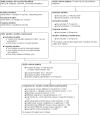
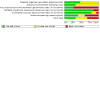
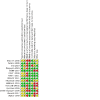

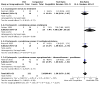
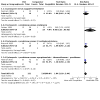
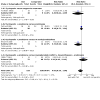

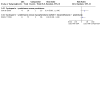
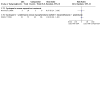

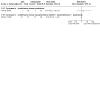
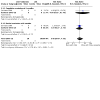
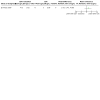
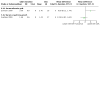
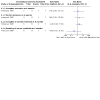
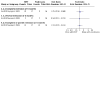
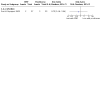
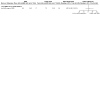
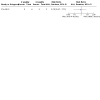
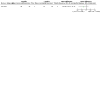
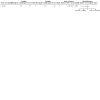
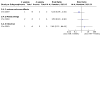
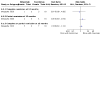
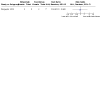
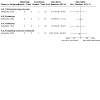
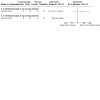
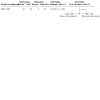
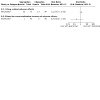
Update of
-
Immunosuppressive treatment for focal segmental glomerulosclerosis in adults.Cochrane Database Syst Rev. 2008 Jul 16;2008(3):CD003233. doi: 10.1002/14651858.CD003233.pub2. Cochrane Database Syst Rev. 2008. Update in: Cochrane Database Syst Rev. 2022 Feb 28;2:CD003233. doi: 10.1002/14651858.CD003233.pub3. PMID: 18646090 Free PMC article. Updated.
Similar articles
-
Interventions for idiopathic steroid-resistant nephrotic syndrome in children.Cochrane Database Syst Rev. 2025 May 8;5(5):CD003594. doi: 10.1002/14651858.CD003594.pub7. Cochrane Database Syst Rev. 2025. PMID: 40337980
-
Interventions for minimal change disease in adults with nephrotic syndrome.Cochrane Database Syst Rev. 2022 Mar 1;3(3):CD001537. doi: 10.1002/14651858.CD001537.pub5. Cochrane Database Syst Rev. 2022. PMID: 35230699 Free PMC article.
-
Non-corticosteroid immunosuppressive medications for steroid-sensitive nephrotic syndrome in children.Cochrane Database Syst Rev. 2024 Nov 8;11(11):CD002290. doi: 10.1002/14651858.CD002290.pub6. Cochrane Database Syst Rev. 2024. PMID: 39513526
-
Immunosuppressive treatment for primary membranous nephropathy in adults with nephrotic syndrome.Cochrane Database Syst Rev. 2021 Nov 15;11(11):CD004293. doi: 10.1002/14651858.CD004293.pub4. Cochrane Database Syst Rev. 2021. PMID: 34778952 Free PMC article.
-
Interventions for idiopathic steroid-resistant nephrotic syndrome in children.Cochrane Database Syst Rev. 2016 Oct 11;10(10):CD003594. doi: 10.1002/14651858.CD003594.pub5. Cochrane Database Syst Rev. 2016. Update in: Cochrane Database Syst Rev. 2019 Nov 21;2019(11). doi: 10.1002/14651858.CD003594.pub6. PMID: 27726125 Free PMC article. Updated.
Cited by
-
Dexamethasone promotes renal fibrosis by upregulating ILT4 expression in myeloid-derived suppressor cells.J Cell Mol Med. 2024 May;28(9):e18310. doi: 10.1111/jcmm.18310. J Cell Mol Med. 2024. PMID: 38676361 Free PMC article.
-
Current understanding of the molecular mechanisms of circulating permeability factor in focal segmental glomerulosclerosis.Front Immunol. 2023 Sep 19;14:1247606. doi: 10.3389/fimmu.2023.1247606. eCollection 2023. Front Immunol. 2023. PMID: 37795085 Free PMC article. Review.
-
Refining the adriamycin-induced focal segmental glomerulosclerosis mouse model to improve reproducibility and animal welfare.Animal Model Exp Med. 2025 May;8(5):854-863. doi: 10.1002/ame2.12564. Epub 2025 Feb 7. Animal Model Exp Med. 2025. PMID: 39917824 Free PMC article.
-
Immunosuppression for adult steroid-dependent or frequently relapsing nephrotic syndrome: A systematic review and meta-analysis.PLoS One. 2024 Jul 31;19(7):e0307981. doi: 10.1371/journal.pone.0307981. eCollection 2024. PLoS One. 2024. PMID: 39083488 Free PMC article.
-
Rituximab in the treatment of primary FSGS: time for its use in routine clinical practice?Clin Kidney J. 2023 May 24;16(8):1199-1205. doi: 10.1093/ckj/sfad122. eCollection 2023 Aug. Clin Kidney J. 2023. PMID: 37529639 Free PMC article.
References
References to studies included in this review
Bhaumik 2002 {published data only}
-
- Bhaumik SK, Majumdar A, Barman SC.Comparison of pulse methylprednisolone vs cyclosporin based therapy in steroid resistant focal segmental glomerulosclerosis [abstract]. Indian Journal of Nephrology 2002;12(4):190. [CENTRAL: CN-00460392]
Cattran 1999 {published data only}
-
- Cattran D, Greenwood C, Bernstein K, Hebert L, Pohl M, Maxwell D, et al.Results of a 6 month randomized controlled trial of cyclosporine (T) vs placebo (C) in adults with steroid resistant idiopathic focal segmental glomerulosclerosis (SR-FSGS) [abstract no: 1544]. Journal of the American Society of Nephrology 1995;6(3):415. [CENTRAL: CN-00483444]
-
- Cattran D, Greenwood C, Hebert L, Pohl M, Hunsicker L, Maxwell D, et al.Follow up results from a randomized controlled trial (RCT) of cyclosporine (T) vs placebo (C) in adults with steroid resistant idiopathic focal segmental glomerulosclerosis [abstract no: 1457]. Journal of the American Society of Nephrology 1995;6(3):414. [CENTRAL: CN-00483445]
-
- Cattran D, Greenwood C.Results of a randomized controlled trial (RCT) of cyclosporine (T) vs placebo (C) in adults with biopsy proven steroid resistant idiopathic focal segmental glomerulosclerosis (FSGS) [abstract]. In: ISN XIII International Congress of Nephrology; July 2-6 1995; Madrid, Spain. 1995:266. [CENTRAL: CN-00509124]
-
- Cattran D, Neogi T, Sharma R, McCarthy ET, Savin VJ.Serial estimates of serum permeability activity and clinical correlates in patients with native kidney focal segmental glomerulosclerosis. Journal of the American Society of Nephrology 2003;14(2):448-53. [MEDLINE: ] - PubMed
-
- Cattran DC, Appel GB, Hebert LA, Hunsicker LG, Pohl MA, Hoy WE, et al.A randomized trial of cyclosporine in patients with steroid-resistant focal segmental glomerulosclerosis. North America Nephrotic Syndrome Study Group. Kidney International 1999;56(6):2220-6. [MEDLINE: ] - PubMed
Cho 2019 {published data only}
-
- Cho ME, Smith D, Fervenza FC, Kopp JB.Pulse dexamethasone over 48 weeks for minimal change nephropathy and focal segmental glomerulosclerosis [abstract no: SA-PO997]. Journal of the American Society of Nephrology 2005;16(Abstracts):775A.
Dasgupta 2020 {published data only}
-
- Dasgupta S, Mondal R, Chakravarty K, Tiwari V, Sahu RK, Pal A, et al.Tacrolimus versus rituximab in adult onset steroid resistant nephrotic syndrome. Journal of the Indian Medical Association 2020;118(6):26-30. [EMBASE: 2004751282]
DUET 2017 {published data only}
-
- Gesualdo L, Lieberman K, Tesar V, Srivastava T, Komers R.Antiproteinuric effect of sparsentan, a dual angiotensin II and endothelin type a receptor antagonist, in patients with primary focal segmental glomerulosclerosis (FSGS): a subgroup analysis of the DUET trial [abstract no: TO042]. Nephrology Dialysis Transplantation 2017;32(Suppl 3):iii97. [EMBASE: 617290819]
-
- Hogan J, Diva U, Murphy E, Rosenberg N, Trachtman H, Komers R.Complete remission of proteinuria in patients with focal segmental glomerulosclerosis treated with sparsentan, a dual endothelin and angiotensin receptor antagonist, in the DUET trial [abstract no: SU-OR38]. Journal of the American Society of Nephrology 2020;31(Abstract Suppl):55. [EMBASE: 633699267]
-
- Hogan JJ, Derebail VK, Murphy E, Raguram PC, Pergola PE, Sanghani NS, et al.Long-term effects of sparsentan, a dual angiotensin and endothelin receptor antagonist in primary focal segmental glomerulosclerosis (FSGS): interim 84-week analysis of the DUET trial [abstract no: FR-OR087]. Journal of the American Society of Nephrology 2018;29(Abstract Suppl):61. [EMBASE: 633737399]
-
- Karol M, Pan-Zhou XR, Tuller SE, Komers R.Sparsentan pharmacokinetics and pharmacodynamics as the basis of dose selection for primary focal segmental glomerular sclerosis (FSGS) [abstract no: SA-PO635]. Journal of the American Society of Nephrology 2017;28(Abstract Suppl):843. [EMBASE: 633698888]
-
- Komers R, Gipson DS, Nelson P, Adler S, Srivastava T, Derebail VK, et al.Efficacy and safety of sparsentan compared with irbesartan in patients with primary focal segmental glomerulosclerosis: randomized, controlled trial design (DUET). Kidney International Reports 2017;2(4):654-64. [MEDLINE: ] - PMC - PubMed
FONT I 2009 {published data only}
-
- Gassman JJ, Trachtman H, Gipson D, Friedman A, Greene T, Vento S, et al.Implementing a second randomized trial enrolling mid-study treatment failures from the Focal Segmental Glomerular Sclerosis (FSGS) Clinical Trial [abstract no: 33]. Clinical Trials 2007;4(4):382. [CENTRAL: CN-00794067]
-
- Ternant D, Paintaud G, Trachtman H, Gipson DS, Joy MS.A possible influence of age on absorption and elimination of adalimumab in focal segmental glomerulosclerosis (FSGS). European Journal of Clinical Pharmacology 2016;72(2):253-5. [MEDLINE: ] - PubMed
-
- Trachtman H, Gipson D, Vento S, Thompson A, Dike M.Novel therapies in resistant FSGS: preliminary results [abstract no: 879 (P)]. Pediatric Nephrology 2007;22(9):1629. [CENTRAL: CN-00794725]
FONT II 2011 {published data only}
FSGS‐CT 2011 {published data only}
-
- Ferris M, Norwood V, Radeva M, Gassman JJ, Al-Uzri A, Askenazi D, et al.Patient recruitment into a multicenter randomized clinical trial for kidney disease: report of the Focal Segmental Glomerulosclerosis Clinical Trial (FSGS CT). Clinical and Translational Science 2013;6(1):13-20. [MEDLINE: ] - PMC - PubMed
-
- Gassman J, Fine R, Gipson D, Greene T, Hogg R, Kaskel F, et al.A preliminary report of the Focal Segmental Glomerulosclerosis Clinical Trial (FSGS-CT) [abstract no: F-PO1984]. Journal of the American Society of Nephrology 2008;19(Abstracts Issue):559A. [CENTRAL: CN-00790759]
-
- Gassman JJ, Trachtman H, Gipson D, Friedman A, Greene T, Vento S, et al.Implementing a second randomized trial enrolling mid-study treatment failures from the Focal Segmental Glomerular Sclerosis (FSGS) Clinical Trial [abstract no: 33]. Clinical Trials 2007;4(4):382. [CENTRAL: CN-00794067]
-
- Gipson DS, Radeva M, Fine R, Friedman A, Gassman J, Greene T et al.Focal Segmental Glomerulosclerosis Clinical Trial (FSGS-CT) study cohort [abstract no: TH-PO165]. Journal of the American Society of Nephrology 2009;20(Abstracts issue):147A. [CENTRAL: CN-00793840]
Imbasciati 1980 {published data only}
-
- Imbasciati E, Cagnoli L, Case N, Pasquali S, Di Filippo G, Limido D, et al.Controlled study of treatment of steroids and chlorambucil, in alternate months, for membranous nephropathy and focal glomerulosclerosis. Preliminary evaluation of the results [Studio controllato di un trattamento a mesi alterni di steroidi e clorambucil nella nefropatia membranosa e nella glomerulosclerosi focale. Valutazione preliminare dei risultati]. Minerva Nefrologica 1980;27(4):571-5. [MEDLINE: ] - PubMed
LUMINA‐1 2018 {published data only}
-
- Staehr P.A study of CCX140-B in subjects with FSGS [A randomized, double-blind, placebo-controlled dose-ranging study to evaluate the safety and efficacy of CCX140-B in subjects with focal segmental glomerulosclerosis (FSGS)]. www.clinicaltrials.gov/show/nct03536754 (first received 25 May 2018).
Ponticelli 1993a {published data only}
-
- Ponticelli C, Rizzoni G, Edefonti A, Altieri P, Rivolta E, Rinaldi S, et al.A randomized trial of cyclosporine in steroid-resistant idiopathic nephrotic syndrome. Kidney International 1993;43(6):1377-84. [MEDLINE: ] - PubMed
Quintaes 2000 {published data only}
-
- Quintaes PS, Barros RT, Noronha IL, Saldanha LB, Woronik V.FSGS: clinical response and urinary excretion of RGF-Beta after cyclosporin a treatment and angiotensin II blockade [abstract no: A0640]. Journal of the American Society of Nephrology 2001;12(Program & Abstracts):122A. [CENTRAL: CN-00447313]
-
- Quintaes PS, Barros RT, Woronik V, Sabbaga E, Machado MM.The association of cyclosporin and angiotensin II receptor antagonist - valsartan, in the treatment of patients with focal and segmental glomerulosclerosis [abstract no: A0518]. Journal of the American Society of Nephrology 2000;11(Sept):95-6A. [CENTRAL: CN-00796164]
Senthil Nayagam 2008 {published data only}
-
- Senthil Nagayam L, Ganguli A, Rathi M, Kohli HS, Gupta KL, Joshi K, et al.Mycophenolate mofetil or standard therapy for membranous nephropathy and focal segmental glomerulosclerosis: a pilot study. Nephrology Dialysis Transplantation 2008;23(6):1926-30. [MEDLINE: ] - PubMed
Vincenti 2017 {published data only}
-
- Tumlin JA, Vincenti F, Fervenza FC, Campbell K, Diaz Encarnacion MM, Praga M, et al.A phase 2, double-blind, randomized study of fresolimumab or placebo in patients with steroid-resistant primary focal segmental glomerulosclerosis [abstract no: SA-PO1095]. Journal of the American Society of Nephrology 2015;26(Abstract Suppl):B4. [CENTRAL: CN-01657786]
-
- Vincenti F, Fervenza FC, Campbell KN, Diaz M, Gesualdo L, Nelson P, et al.A phase 2, double-blind, placebo-controlled, randomized study of fresolimumab in patients with steroid-resistant primary focal segmental glomerulosclerosis. Kidney International Reports 2017;2(5):800-10. [MEDLINE: ] - PMC - PubMed
Walker 1990 {published data only}
-
- Walker RG, Kincaid-Smith P.Cyclosporin A (Cy-A) treatment in focal and segmental hyalinosis and sclerosis (FSHS): a controlled trial [abstract no: 17]. Kidney International 1989;36(6):1162. [CENTRAL: CN-00509552]
-
- Walker RG, Kincaid-Smith P.The effect of treatment of corticosteroid-resistant idiopathic (primary) focal and segmental hyalinosis and sclerosis (focal glomerulosclerosis) with ciclosporin. Nephron 1990;54(2):117-21. [MEDLINE: ] - PubMed
References to studies excluded from this review
Chan 2007 {published data only}
-
- Chan TM, Lin AW, Tang SC, Qian JQ, Lam MF, Ho YW, et al.Prospective controlled study on mycophenolate mofetil and prednisolone in the treatment of membranous nephropathy with nephrotic syndrome. Nephrology 2007;12(6):576-81. [MEDLINE: ] - PubMed
GloMY 2010 {published data only}11937028
-
- Harper L.Randomised pilot trial of myfortic for the treatment of primary proteinuric glomerulonephritis. www.clinicaltrialsregister.eu/ctr-search/trial/2009-016003-26/GB (accessed 5 January 2022).
Heering 2004 {published data only}
-
- Heering P, Braun N, Müllejans R, Ivens K, Zäuner I, Fünfstück R, et al.Cyclosporine A and chlorambucil in the treatment of idiopathic focal segmental glomerulosclerosis. American Journal of Kidney Diseases 2004;43(1):10-8. [MEDLINE: ] - PubMed
-
- Heering P, Mullejans R, Braun N, Zauner I, Funfstuck R, Keller F, et al.Therapy of FSGS with nephrotic syndrome - 3 years follow up of a prospective randomised multicenter study [abstract]. Nephrology Dialysis Transplantation 1999;14(9):A98. [CENTRAL: CN-00509229]
-
- Heering P, Mullejans R, Braun N, Zauner I, Funfstuck R, Keller F, et al.Therapy of FSGS with nephrotic syndrome - 3 years follow up of a prospective randomised multicenter study [abstract no: A0416]. Journal of the American Society of Nephrology 1997;8(Program & Abstracts):87A. [CENTRAL: CN-00445685]
-
- Heering P, Mullejans R, Braun N, Zauner I, Schollmeyer P, Funfstuck R.Therapy of FSGS with nephrotic syndrome - 3 years follow up of a prospective randomized multicenter study [abstract]. Nephrology Dialysis Transplantation 1996;11(6):A105. [CENTRAL: CN-00261254]
Liu 2006 {published data only}
-
- Liu Z.Tacrolimus treatment of patients with idiopathic focal segmental glomerulosclerosis. www.clinicaltrials.gov/ct2/show/NCT00302536 (first received 14 March 2006). [CENTRAL: CN-00583312]
Liu 2016c {published data only}
-
- Liu Y, Qu X, Chen W, Zhang Y, Liu L.Efficacy of leflunomide combined with prednisone in the treatment of refractory nephrotic syndrome. Renal Failure 2016;38(10):1616-21. [MEDLINE: ] - PubMed
NCT01451489 {published data only}
-
- Liu ZH.The efficacy and safety of tacrolimus in treated refractory focal segmental glomerulosclerosis (FSGS) [A randomized, multicentre, prospective study on the tacrolimus (FK506) for focal segmental glomerulosclerosis]. www.clinicaltrials.gov/show/NCT01451489 (first received 13 October 2011).
Ren 2013 {published data only}
-
- Ren H, Shen P, Li X, Pan X, Zhang W, Chen N.Tacrolimus versus cyclophosphamide in steroid-dependent or steroid-resistant focal segmental glomerulosclerosis: a randomized controlled trial. American Journal of Nephrology 2013;37(1):84-90. [MEDLINE: ] - PubMed
Trachtman 2011 {published data only}
References to studies awaiting assessment
EudraCT2005‐004460‐22 {published data only}
-
- EudraCT2005-004460-22.Multicenter, pilot, open, randomized, parallel group study to evaluate the association of Neoral with ACE-inhibitors as compared to corticosteroids with ACE-inhibitors in the treatment of de novo nephrotic syndrome due to focal segmental glomerulosclerosis. www.clinicaltrialsregister.eu/ctr-search/search?query=eudract_number:200... (first received 12 May 2006).
NCT00801463 {published data only}
-
- Liu ZH.Prednisone plus Tripterygium wilfordii treatment of adult patients with idiopathic focal segmental glomerulosclerosis. www.clinicaltrials.gov/show/NCT00801463 (first received 3 December 2008).
NCT00956059 {published data only}
-
- Gui B.Therapeutic effect of low-dose prednisone combined with MMF and FK506 in focal segmental glomerulosclerosis. www.clinicaltrials.gov/show/NCT00956059 (first received 11 August 2009).
References to ongoing studies
ACTION 2018 {published data only}
-
- Roger S, Packham D, Shephard R, Power D.Action (AT1R and CCR2 targets for inflammatory nephrosis) phase 2a trial for focal segmental glomerulusclerosis [abstract]. Nephrology 2018;23(Suppl 3):78. [EMBASE: 623841909]
DUPLEX 2019 {published data only}
-
- Trachtman H, Diva U, Inrig J, Loewen A, Rote W, Komers R.Sparsentan for treatment of patients with focal segmental glomerulosclerosis (FSGS): design of the phase 3 DUPLEX study [abstract no: 373]. American Journal of Kidney Diseases 2019;73(5):740-1. [EMBASE: 2001804388] - PubMed
NCT03298698 {published data only}
-
- Deegens HK, Wetzels JF.Efficacy of rituximab in comparison to continued corticosteroid treatment in idiopathic nephrotic syndrome [Efficacy of rituximab in comparison to continued corticosteroid treatment in idiopathic nephrotic syndrome unresponsive to 8 weeks of high dose prednisone]. www.ClinicalTrials.gov/show/NCT03298698 (first received 2 October 2017).
PODOCYTE 2017 {published data only}
-
- Tumlin JA, Rovin BH, Lafayette RA, Zhao E, Becker P, Patel L, et al.Treatment of proteinuria due to treatment resistant or treatment intolerant idiopathic focal segmental glomerulosclerosis: a 2 part prospective study of H.P.acthar gel ( PODOCYTE) [abstract no: PUB515]. Journal of the American Society of Nephrology 2017;28(Abstract Suppl):1095. [EMBASE: 633704574]
Trachtman 2018 {published data only}
TURING 2019 {published data only}16948923
-
- Qian W, Machin A, Griffith M, Willcocks L.Analysis of duration of remission as an intention-to-treat analysis with application to the TURING trial [abstract no: P-194]. Trials 2019;20(Suppl 1):56. [EMBASE: 629759857]
-
- Willcocks L, Griffith M.TURING - the use of rituximab in the treatment of nephrotic glomerulonephritis - clinical trial protocol V2.0. https://njl-admin.nihr.ac.uk/document/download/2030929 (accessed 5 January 2022).
Additional references
Bohle 1986
-
- Bohle GH.Die Niere. Stuttgart: Schattauer, 1986.
Burgess 1999
-
- Burgess E.Management of focal segmental glomerulosclerosis: evidence based recommendations. Kidney International - Supplement 1999;70:S26-32. [MEDLINE: ] - PubMed
Chao 2020
De Vriese 2018
GRADE 2008
GRADE 2011
-
- Guyatt G, Oxman AD, Akl EA, Kunz R, Vist G, Brozek J, et al.GRADE guidelines: 1. Introduction-GRADE evidence profiles and summary of findings tables. Journal of Clinical Epidemiology 2011;64(4):383-94. [MEDLINE: ] - PubMed
Higgins 2003
Higgins 2020
-
- Higgins JP, Thomas J, Chandler J, Cumpston M, Li T, Page MJ, et al (editors).Cochrane Handbook for Systematic Reviews of Interventions version 6.1 (updated September 2020). Cochrane, 2020. Available from www.training.cochrane.org/handbook.
KDIGO 2012
-
- KDIGO Clinical Practice Guidelines for Glomerulonephritis. Kidney International Supplements 2012;2(2):139-274.
KDIGO 2021
-
- Kidney Disease: Improving Global Outcomes (KDIGO) Glomerular Diseases Work Group.KDIGO 2021 clinical practice guideline for the management of glomerular diseases. Kidney International 2021;100(Suppl 4):S1-276. - PubMed
Kopp 2011
Kopp 2015
Meyrier 1999
-
- Meyrier A.Treatment of primary focal segmental glomerulosclerosis. NephrologyDialysis Transplantation 1999;14 Suppl 3:74-8. [MEDLINE: ] - PubMed
Schünemann 2020a
-
- Schünemann HJ, Higgins JP, Vist GE, Glasziou P, Akl EA, Skoetz N, et al.Chapter 14: Completing ‘Summary of findings’ tables and grading the certainty of the evidence. In: Higgins JPT, Thomas J, Chandler J, Cumpston M, Li T, Page MJ, Welch VA (editors). Cochrane Handbook for Systematic Reviews of Interventions version 6.1 (updated September 2020). Cochrane, 2020. Available from www.training.cochrane.org/handbook.
Schünemann 2020b
-
- Schünemann HJ, Vist GE, Higgins JP, Santesso N, Deeks JJ, Glasziou P, et al.Chapter 15: Interpreting results and drawing conclusions. In: Higgins JPT, Thomas J, Chandler J, Cumpston M, Li T, Page MJ, Welch VA (editors). Cochrane Handbook for Systematic Reviews of Interventions version 6.1 (updated September 2020). Cochrane, 2020. Available from www.training.cochrane.org/handbook.
Shabaka 2020
-
- Shabaka A, Tato Ribera A, Fernandez-Juarez G.Focal segmental glomerulosclerosis: state-of-the-art and clinical perspective. Nephron 2020;144(9):413-27. [MEDLINE: ] - PubMed
Troost 2021
Troyanov 2005
-
- Troyanov S, Wall CA, Miller JA, Scholey JW, Cattran DC, Toronto Glomerulonephritis Registry Group.Focal and segmental glomerulosclerosis: definition and relevance of a partial remission. Journal of the American Society of Nephrology 2005;16(4):1061-8. [MEDLINE: ] - PubMed
References to other published versions of this review
Braun 2001
Publication types
MeSH terms
Substances
Associated data
LinkOut - more resources
Full Text Sources
Medical

